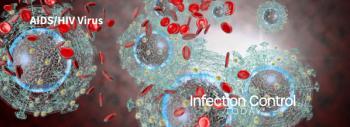
Early Detection of VAP After ICU Admission is Encouraged
The incidence of ventilator-associated pneumonia (VAP) within the first 48 hours of intensive care unit (ICU) stay has been poorly investigated. Philippe Vanhems, of the infection control unit at Edouard Herriot Hospital in Lyon, France, and colleagues, sought to estimate early-onset VAP occurrence in ICUs within 48 hours after admission.
The researchers analyzed data from prospective surveillance between Jan. 1, 2001 and Dec. 31, 2009 in 11 ICUs of Lyon hospitals. The inclusion criteria were: first ICU admission, not hospitalized before admission, invasive mechanical ventilation during first ICU day, free of antibiotics at admission, and ICU stay >=48 hours. VAP was defined according to a national protocol. Its incidence was the number of events per 1,000 invasive mechanical ventilation-days. The Poisson regression model was fitted from day 2 (D2) to D8 to incident VAP to estimate the expected VAP incidence from D0 to D1 of ICU stay.
In total, 367 (10.8%) of 3,387 patients in 45,760 patient-days developed VAP within the first 9 days. The predicted cumulative VAP incidence at D0 and D1 was 5.3 (2.6-9.8) and 8.3 (6.1-11.1), respectively. The predicted cumulative VAP incidence was 23.0 (20.8-25.3) at D8. The proportion of missed VAP within 48 hours from admission was 11 percent (9%-17%).
Vanhems, et al. conclude that there is an underestimation of early-onset VAP incidence in ICUs, if only VAP occurring [greater than or equal to] 48 hours is considered to be hospital-acquired. Clinicians should be encouraged to develop a strategy for early detection after ICU admission. Their research was published in
Reference: Vanhems P, et al. Early-onset ventilator-associated pneumonia incidence in intensive care units: a surveillance-based study. BMC Infectious Diseases 2011, 11:236doi:10.1186/1471-2334-11-236.
Newsletter
Stay prepared and protected with Infection Control Today's newsletter, delivering essential updates, best practices, and expert insights for infection preventionists.






